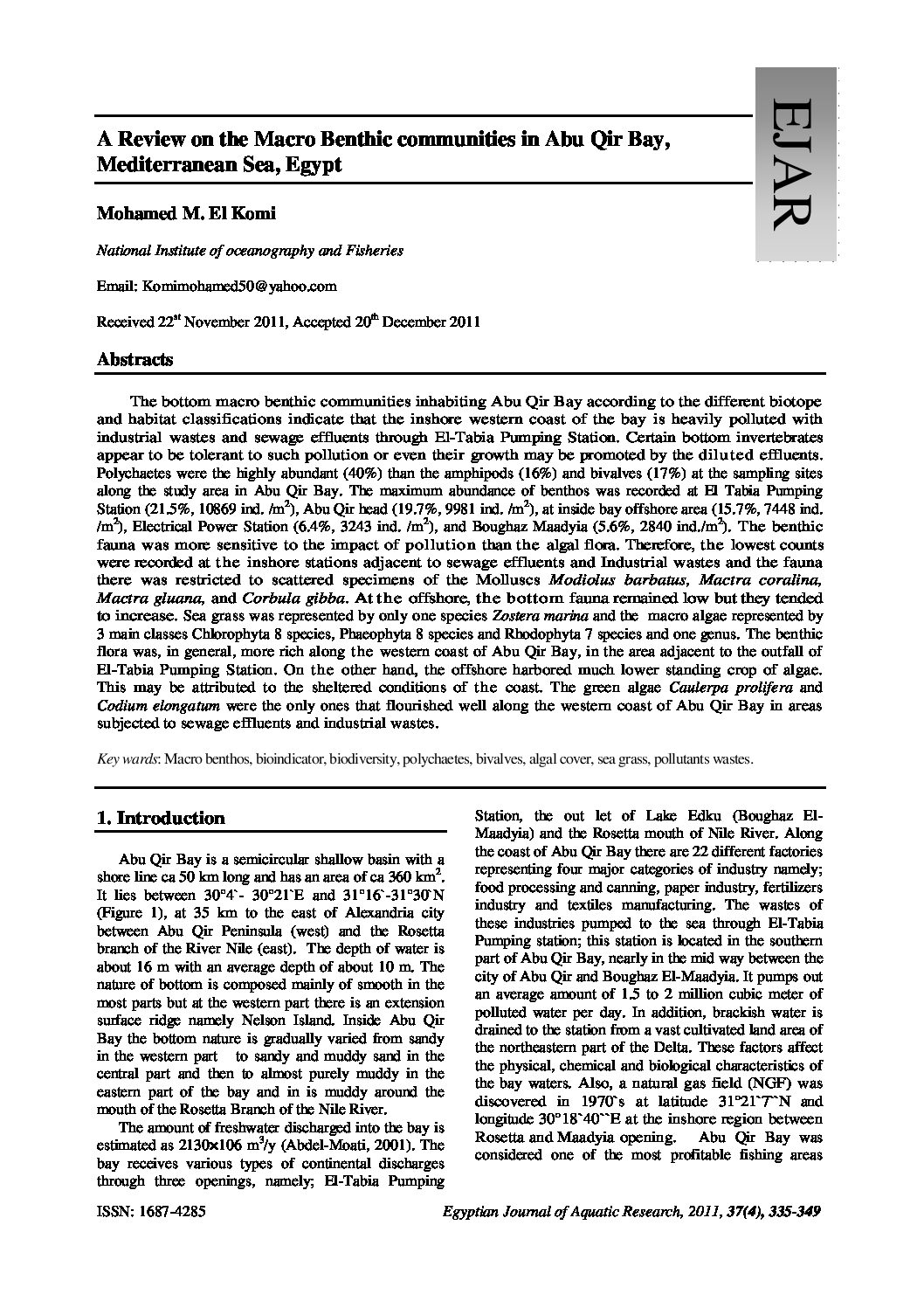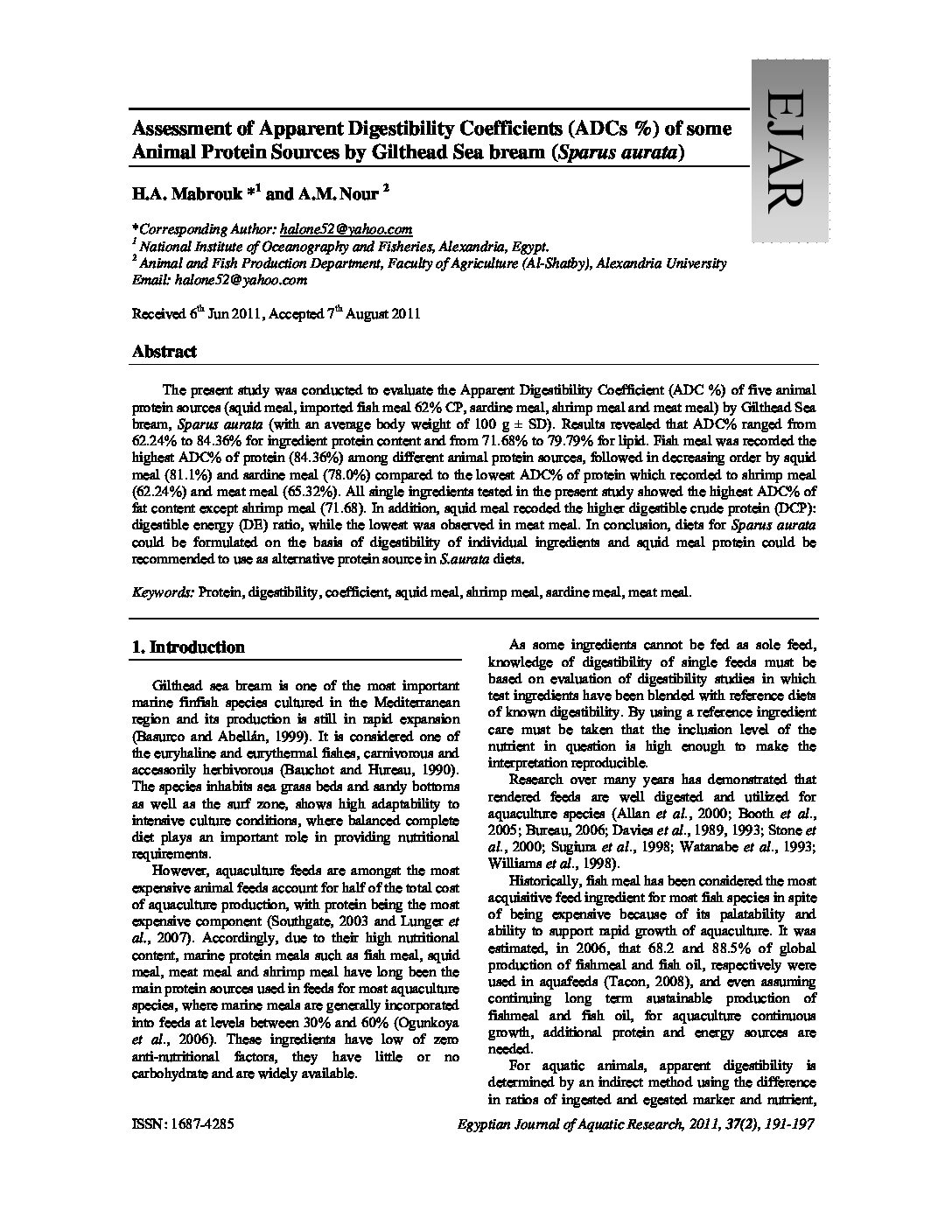Categories
vol-37A Review on the Macro Benthic communities in Abu Qir Bay,
Mediterranean Sea, Egypt
Mohamed M. El Komi
National Institute of oceanography and Fisheries
Email: [email protected]
Received 22st November 2011, Accepted 20th December 2011
Abstracts
The bottom macro benthic communities inhabiting Abu Qir Bay according to the different biotope
and habitat classifications indicate that the inshore western coast of the bay is heavily polluted with
industrial wastes and sewage effluents through El-Tabia Pumping Station. Certain bottom invertebrates
appear to be tolerant to such pollution or even their growth may be promoted by the diluted effluents.
Polychaetes were the highly abundant (40%) than the amphipods (16%) and bivalves (17%) at the sampling sites
along the study area in Abu Qir Bay. The maximum abundance of benthos was recorded at El Tabia Pumping
Station (21.5%, 10869 ind. /m2
), Abu Qir head (19.7%, 9981 ind. /m2
), at inside bay offshore area (15.7%, 7448 ind.
/m2
), Electrical Power Station (6.4%, 3243 ind. /m2
), and Boughaz Maadyia (5.6%, 2840 ind./m2
). The benthic
fauna was more sensitive to the impact of pollution than the algal flora. Therefore, the lowest counts
were recorded at the inshore stations adjacent to sewage effluents and Industrial wastes and the fauna
there was restricted to scattered specimens of the Molluscs Modiolus barbatus, Mactra coralina,
Mactra gluana, and Corbula gibba. At the offshore, the bottom fauna remained low but they tended
to increase. Sea grass was represented by only one species Zostera marina and the macro algae represented by
3 main classes Chlorophyta 8 species, Phaeophyta 8 species and Rhodophyta 7 species and one genus. The benthic
flora was, in general, more rich along the western coast of Abu Qir Bay, in the area adjacent to the outfall of
El-Tabia Pumping Station. On the other hand, the offshore harbored much lower standing crop of algae.
This may be attributed to the sheltered conditions of the coast. The green algae Caulerpa prolifera and
Codium elongatum were the only ones that flourished well along the western coast of Abu Qir Bay in areas
subjected to sewage effluents and industrial wastes.
Key wards: Macro benthos, bioindicator, biodiversity, polychaetes, bivalves, algal cover, sea grass, pollutants wastes.







